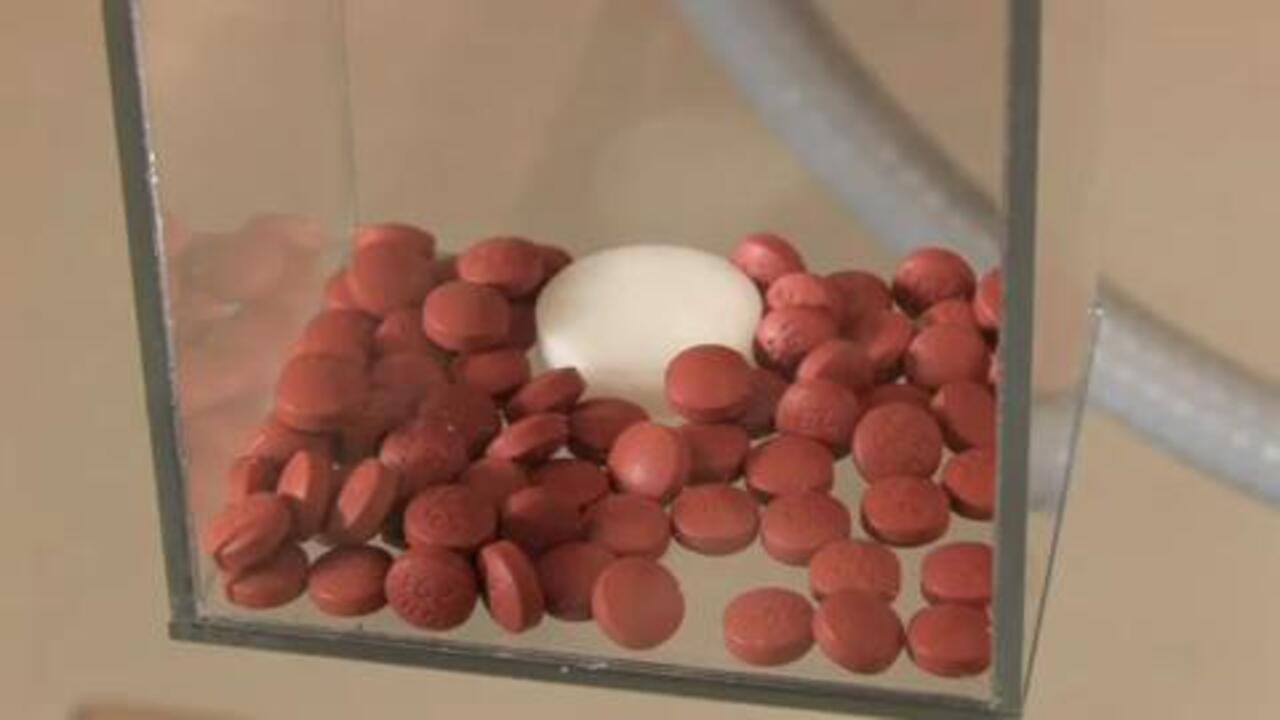Search Thermo Fisher Scientific
Resources for pharmaceutical inspection
Browse our resources – including FAQs, videos, brochures, white papers, and more – to learn about our trusted pharmaceutical product inspection solutions.
Featured resources
Videos
White paper
Blog
FAQs
These techniques are applied at multiple points in tablet and capsule making, in bottle and vial filling, blistering, and primary and secondary packaging operations.
A wide range of packaged pharmaceutical products can be inspected by X-ray systems, as well as empty packages prior to filling. Typical applications include detection of glass contaminants in glass vials for lyophilized products, inspection of ampoules, inspection of blister packs for missing or damaged tablets or capsules, and inspection of powders in metalized foil pouches or large tubs sealed with metalized foil (when traditional metal detector solutions are ineffective).
Work has been done to simulate the effects of X-ray exposure from inspection equipment on APIs but, given the number of different APIs produced, such work does not allow for a definitive answer to this question. We can, however, assert that the X-ray energies used, and the total exposure levels applied during the inspection process are low, and therefore unlikely to have an impact on API quality, effectivity, or shelf-life. Should a specific product need inspecting, work can be done by system suppliers and producers to check for a problem.
Inline checkweighers help ensure production quality by accurately weighing products during the manufacturing process. They are designed to detect any deviations from the specified weight, which can indicate potential issues such as under or overfilling, product contamination, missing pieces, or equipment malfunctions.
Several performance characteristics are critical for inline checkweighers to effectively ensure production quality. These include:
Accuracy: The checkweigher should have a high level of accuracy to provide precise weight measurements. This ensures that any deviations from the specified weight are detected with high sensitivity.
Speed: The checkweigher should be able to handle the production line's speed without causing any bottlenecks. It should be capable of quickly weighing products as they move through the line.
Integration: Seamless integration with other production line equipment, such as filling machines or conveyor systems, is crucial. This enables real-time communication and synchronization to ensure accurate weighing and efficient production flow.
Data Management: The checkweigher should have robust data management capabilities, such as data logging and reporting. This helps track and analyze production trends, identify potential issues, and ensure compliance with quality standards.
Inline checkweighers that combine these critical performance characteristics can play a vital role in maintaining production quality by ensuring accurate and consistent weights throughout the manufacturing process.
Inline metal detectors play a crucial role in ensuring production quality by detecting and removing any metal contaminants that may be present in the production process. These contaminants can include metal fragments, shavings, or foreign objects that could pose a safety risk to consumers or damage production equipment.
To ensure effective performance, there are several critical performance characteristics that inline metal detectors should possess. Sensitivity is a key factor, as it determines the detector's ability to detect even the smallest metal particles. The higher the sensitivity, the better the detector can identify contaminants.
Another important characteristic is stability, which refers to the detector's ability to maintain consistent performance over time. A stable detector minimizes false alarms and ensures reliable detection.
Additionally, speed is crucial for inline metal detectors, as they need to operate at the production line's speed without causing any disruption or delay. Quick response times are essential to prevent contaminated products from reaching consumers.
Inline metal detectors that possess these critical performance characteristics contribute significantly to ensuring production quality by effectively identifying metal contaminants and removing contaminated products, thereby enhancing product safety and consumer satisfaction.
Inline X-ray detection and inspection systems help to ensure production quality by providing real-time inspection of products during the manufacturing process, identifying various defects, contaminants, or inconsistencies. By detecting these issues in a timely manner, inline X-ray detection systems help prevent defective or potentially unsafe products from reaching consumers.
Several performance characteristics are critical for inline X-ray detection systems. Firstly, sensitivity is crucial to detect even the smallest defects or contaminants. The system should be able to identify these issues reliably, even at high production speeds. Speed and accuracy are both important to ensure minimal disruption to the production line while maintaining precise inspection results. The system should be able to process products quickly without compromising on the accuracy of detection.
In addition, reliability and robustness are critical characteristics for inline X-ray detection systems. They should be able to operate consistently and withstand the demands of continuous production environments, ensuring minimal downtime and maintenance requirements.
For Research Use Only. Not for use in diagnostic procedures.
